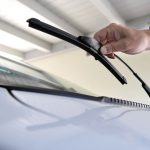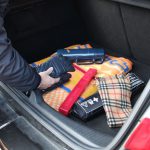As soon as the summer is over, the cold season is already approaching, so it’s high time for a winter check. In most cases there is still enough time to prepare the house, yard and car for the winter. However, a sudden onset of winter can not only endanger traffic on the roads, your own car in particular can quickly suffer damage if it has not been prepared for the change in weather. But with just a few simple steps and the right tools, vehicles can be winterized in a short time.
We asked car dealers and garages what challenges the cold season brings with it and how drivers can best prepare for winter. The checklist covers the essential points.
Keep clear view in winter
Clean the wipers with water and detergent. Wiping away a light layer of ice in winter is extremely hard work for windscreen wipers, which significantly shortens their service life. Rough surfaces such as frozen water destroy the wiping edge very quickly, so always make sure that the surface is smooth and that no grains or leaves have deposited.
Thoroughly check the paintwork and underbody and repair any damage
The danger that winter brings to the car is often significantly underestimated. It is by no means always the cold itself that has to take its toll on the car. As soon as there is a threat of frost or the first snow falls, gritting vehicles are used to sprinkle the streets with salt. What is advantageous for driving safety is more than disadvantageous for the paintwork of cars. For this reason, scratches in the paint should be repaired before winter. Otherwise there is a risk of rapid rusting, since the scratched areas have no protection whatsoever, the salt penetrates and thus accelerates the oxidation of the metal. Minor scratches can easily be corrected with a paint pen. In the case of major damage, however, you should consult a specialist.
Winter check guide
The underbody is particularly prone to rust, which is why a thorough underbody cleaning should be carried out before winter. On the other hand, the sub-floor subsequently offers a fodder for brown pitting. In order to prevent such damage, there is a large number of care products such as antifreeze, which can be found, for example, at better sorted providers such as autoteiledirekt.de. Rubber door seals also require special care. To prevent them from freezing in winter, they should be treated with silicone oil beforehand. You can achieve the same effect by using graphite oil on door locks.



Changing tires and replacing fluids
If you don’t want to be surprised by the onset of winter, you should play it safe and switch to winter tires by the beginning of October at the latest. “The rule of thumb for assembly is from O to O – i.e. from October to Easter. This means that drivers are also legally on the safe side, because the law stipulates tires that are appropriate for the weather conditions,” explains Hans-Ulrich Sander, motor vehicle expert at TÜV Rheinland. At higher altitudes, the change can also take place earlier. The fluids in the car are just as important as the right tires. Both the cooling water for the engine and the wiper water for the windscreen wipers should be prepared for the cold season with antifreeze. With measuring spindles, such as those available at petrol stations or in specialist shops, it can be determined within a few seconds whether the freezing point of the liquid is still OK or whether the antifreeze should be renewed.
Advantages of winter tires
- Good grip on icy roads and heavy snowfall
- Deep profile for optimal interlocking on loose subsoil
In addition, the battery should also be checked for its performance. Low temperatures and electrical consumers such as heating, lights and air conditioning sap your strength, which is why the battery tends to run flat in winter and is the most common cause of breakdowns. Special battery testers help to check the charge level. Especially if the car battery is already several years old, there is a risk of problems with the first frost. As a result, the car may no longer start.
Tips for driving in winter
Before driving, scrape all patches of snow and ice free. If you don’t feel like it, you can have an auxiliary heater installed later. Don’t forget the roof because the masses of snow slide off the roof quickly, obstructing the view or obstructing other drivers.

Even if progress is really slow, the ADAC advises against overtaking the winter service vehicles. The spreaders clear away snow and ice. From as little as two to three degrees Celsius it can become dangerously slippery on the roads, especially in forest aisles and on bridges. Staying behind the snow vehicle means more safety.
How much does a winter check cost?
Depending on the workshop, a winter check costs between 15 and 100 euros. You should plan between 30 and 60 minutes for the inspection of your vehicle. Here is a list of where you can make an appointment:

